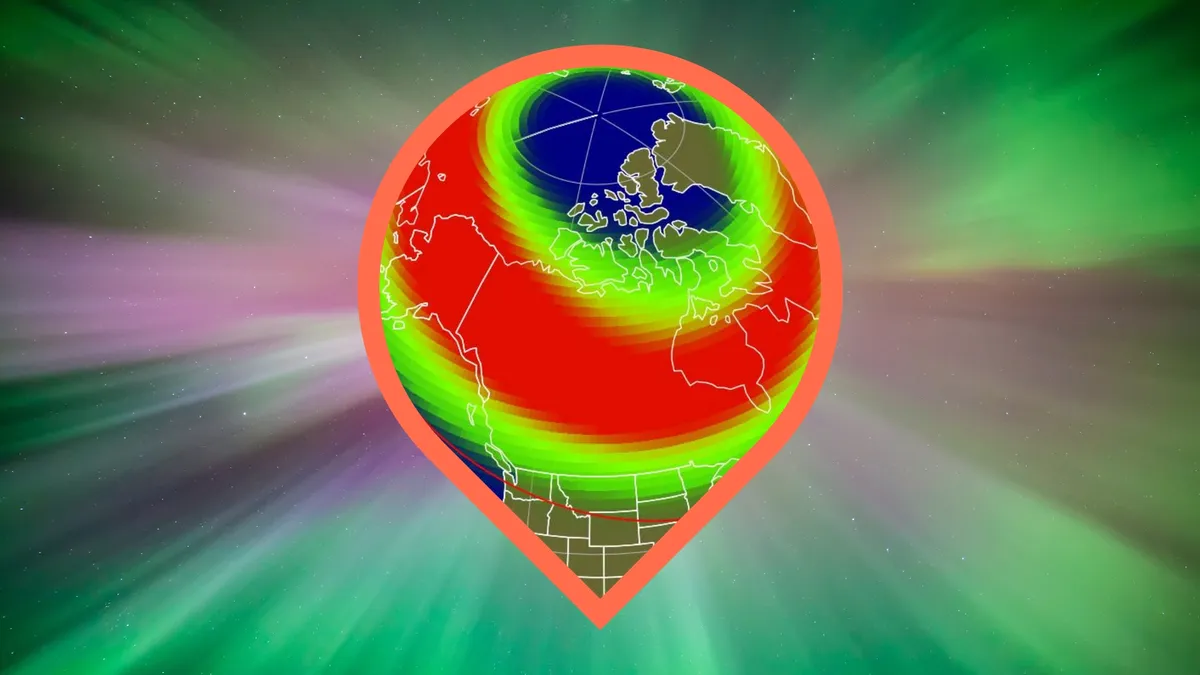
The northern lights are set to illuminate the skies overnight on August 18-19, thanks to a fast-moving stream of solar wind that is expected to trigger minor geomagnetic storm conditions. This exciting news comes from the National Oceanic and Atmospheric Administration (NOAA), which indicates that visible auroras could grace the skies across as many as 15 U.S. states. With predictions from NOAA's Space Weather Prediction Center (SWPC) and the U.K. Met Office, stargazers have much to look forward to tonight.
A large coronal hole on the sun is currently directed toward Earth, allowing for a significant ejection of solar wind to travel in our direction. Coronal holes are regions in the sun's magnetic field that permit solar wind to escape more freely, creating a high-speed solar wind stream. This influx of solar particles is expected to interact with Earth's magnetic field tonight, increasing the likelihood of minor geomagnetic storm conditions.
According to NOAA's predictions, the Kp index—a scale measuring geomagnetic activity—is expected to reach Kp 5 tonight, indicating the presence of minor geomagnetic storm conditions. The forecast suggests that the best time for viewing the northern lights will be between 11 p.m. and 5 a.m. EDT (0300 to 0900 UTC on August 19). This timeframe provides an excellent window for witnessing the dazzling auroras, as the Kp index ranges from 0 to 9, with higher values indicating more intense auroral activity.
In addition to tonight's forecast, the U.K. Met Office indicates that there may be further minor geomagnetic enhancements on Monday (August 18), with a chance of G1-level storming extending into Tuesday and Wednesday. This is potentially due to a coronal mass ejection (CME) that is currently under assessment for any Earth-directed components. Although the forecasts remain uncertain, the possibility of additional auroral displays in the coming nights adds to the excitement.
NOAA’s updated aurora forecast map identifies 15 U.S. states that are positioned either fully or partially above the aurora viewing line. These states, in order of their likelihood to witness the northern lights based on proximity to the auroral oval, include:
AlaskaMontanaNorth DakotaMinnesotaWisconsinMichiganMaineSouth DakotaVermontNew HampshireIdahoWashingtonNew YorkWyomingIowaIt’s important to note that the appearance of auroras can be highly unpredictable. Even if your state falls within the viewing zone, clear skies, minimal light pollution, and a good view to the north are essential for the best chances of seeing the lights.
If you're located in one of the 15 U.S. states mentioned above, here are some tips to maximize your chances of witnessing the breathtaking auroras:
Seek out a dark location far from city lights to reduce light pollution.Find a spot with a clear, unobstructed view to the north.Plan to look up between midnight and 2 a.m. local time, but keep an eye on the sky as soon as it gets dark.Practice patience, as auroras often appear in waves and may start out faint.With the potential for stunning displays of the northern lights, now is the perfect time to grab your warm clothes and head out for an unforgettable night under the stars!